Introduction
Understanding the intricacies of mineral rights is essential for anyone involved in the oil and gas industry. Mineral rights, distinct from surface rights, pertain to the ownership of subsurface materials, including valuable hydrocarbons and other minerals. The historical context, particularly in regions like Texas, has significantly shaped economic and cultural landscapes, making the ownership and transfer of these rights a foundational element of resource management.
The complex legal scenarios arising from the separation of surface and mineral rights underscore the need for a thorough understanding of the regulatory landscape. The Bureau of Land Management's leasing program for onshore oil and gas, guided by the Mineral Leasing Act, exemplifies the intricate interplay between economic, environmental, and legal considerations. As global demand for transition minerals like lithium, nickel, and cobalt intensifies, clear and enforceable mineral rights become increasingly crucial.
This article delves into the multifaceted process of acquiring mineral rights, from initial steps and regulatory compliance to due diligence and strategic planning. By examining historical precedents, legal frameworks, and emerging trends, it provides a comprehensive overview of the challenges and opportunities inherent in securing these valuable rights.
Understanding Mineral Rights
Subsurface entitlements relate to the possession of underground resources, which may encompass precious hydrocarbons and additional substances. Unlike surface entitlements, which pertain to the land's surface, resource ownership can be independently possessed and transferred. This differentiation is crucial for oil and gas firms, as obtaining resource privileges is necessary for exploration and extraction operations.
'The historical background of resource privileges is notably significant in areas like Texas, where possession of these assets has been a cornerstone of economic and cultural development.'. Texans have enjoyed the opportunity to access subsurface materials for over 150 years, a legacy enshrined in the state's constitution since 1866. 'This enduring custom of ownership related to resources has enabled the extraction and production of hydrocarbons, generating significant wealth and requiring a responsible approach to management.'.
The division of resources and surface entitlements often results in intricate legal situations, as demonstrated in recent conflicts where surface landowners and subsurface entitlement holders have opposing interests. An example is the Supreme Court discussion regarding Extraction Oil and Gas, Inc., where the court's ruling could greatly affect the entitlements and royalties linked to subsurface resources.
Comprehending and maneuvering through these legal intricacies is essential, particularly as the need for resources escalates with the worldwide transition towards renewable energy technologies. 'The growing demand for 'transition resources' such as lithium, nickel, and cobalt highlights the significance of transparent and enforceable resource entitlements.'.
In the context of federal regulations, the Bureau of Land Management (BLM) administers the leasing program for onshore oil and gas. The fiscal terms of leases, determined by the Mineral Leasing Act, include application fees, minimum bids, rental and royalty rates, and bonding requirements. These provisions ensure competitive lease sales and protect federal interests, emphasizing the economic and regulatory frameworks governing resource exploration and production.
Overall, the complex interaction between surface and resource entitlements, historical legacies, and changing regulatory frameworks highlights the essential importance of comprehending and obtaining resource entitlements in the oil and gas sector.
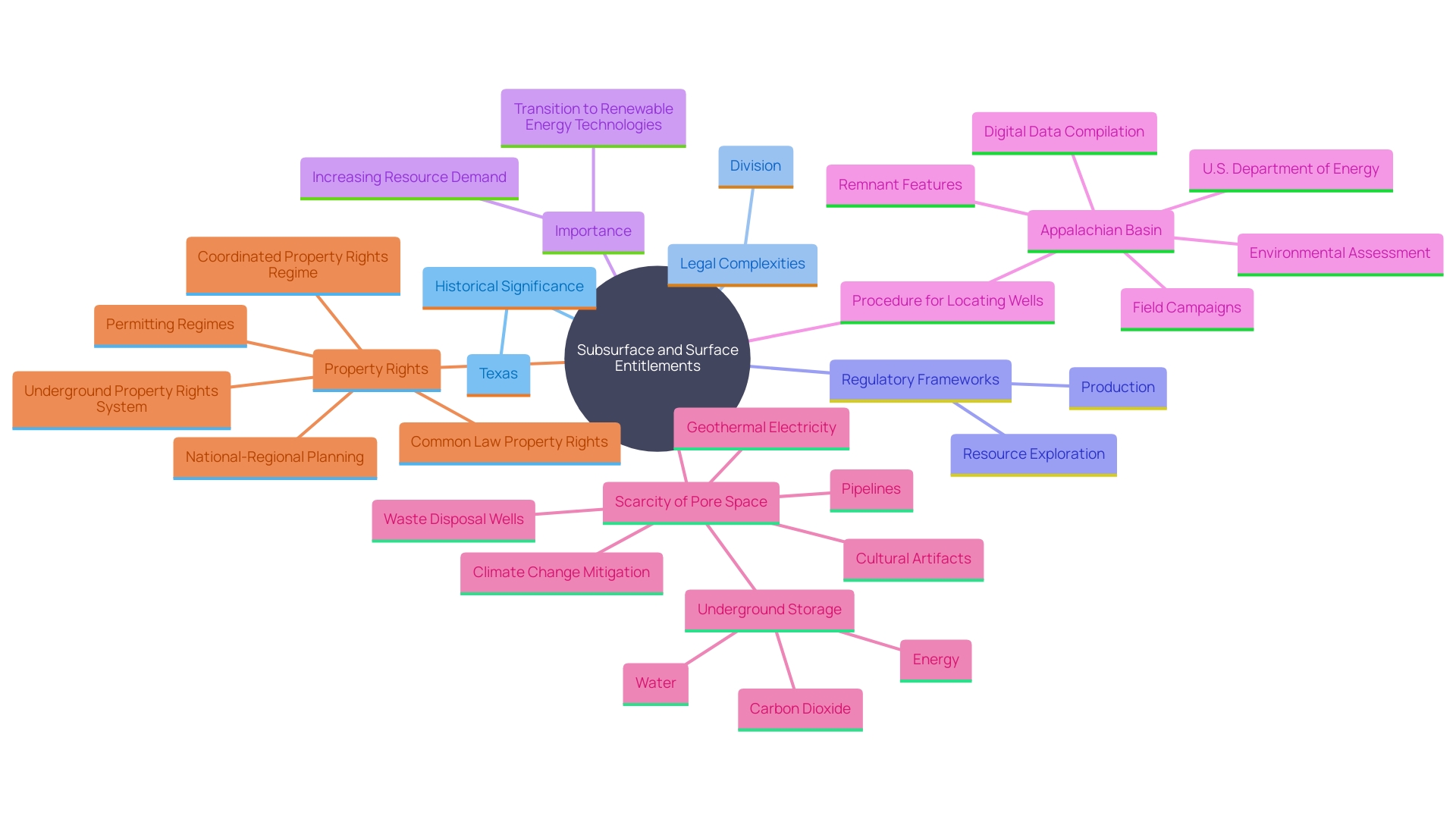
Initial Steps in Acquiring Mineral Rights
The first stage of obtaining resource entitlements includes identifying the targeted land sections and evaluating the existing ownership of these entitlements. This process is typically conducted through thorough title searches and meticulous review of property records. Mineral ownership in Texas, for instance, can be traced back to the 1866 state constitution, which established private ownership of subsurface materials. Engaging with local landowners and stakeholders early on is crucial, as it can streamline negotiations and foster positive relationships. Considering the intricacy of resource entitlements, including the possibility of division from surface privileges and partial ownership, it's essential to create a clear comprehension and firm foundation. Furthermore, with resource leases being classified as real estate interests, they may be eligible for a 1031 exchange, enabling investors to reinvest profits without immediate tax obligations. However, specific lease terms, such as extraction limitations, might affect this eligibility. Therefore, establishing the initial foundation guarantees future eligibility for such financial mechanisms, promoting a strategic and knowledgeable approach to resource acquisition.
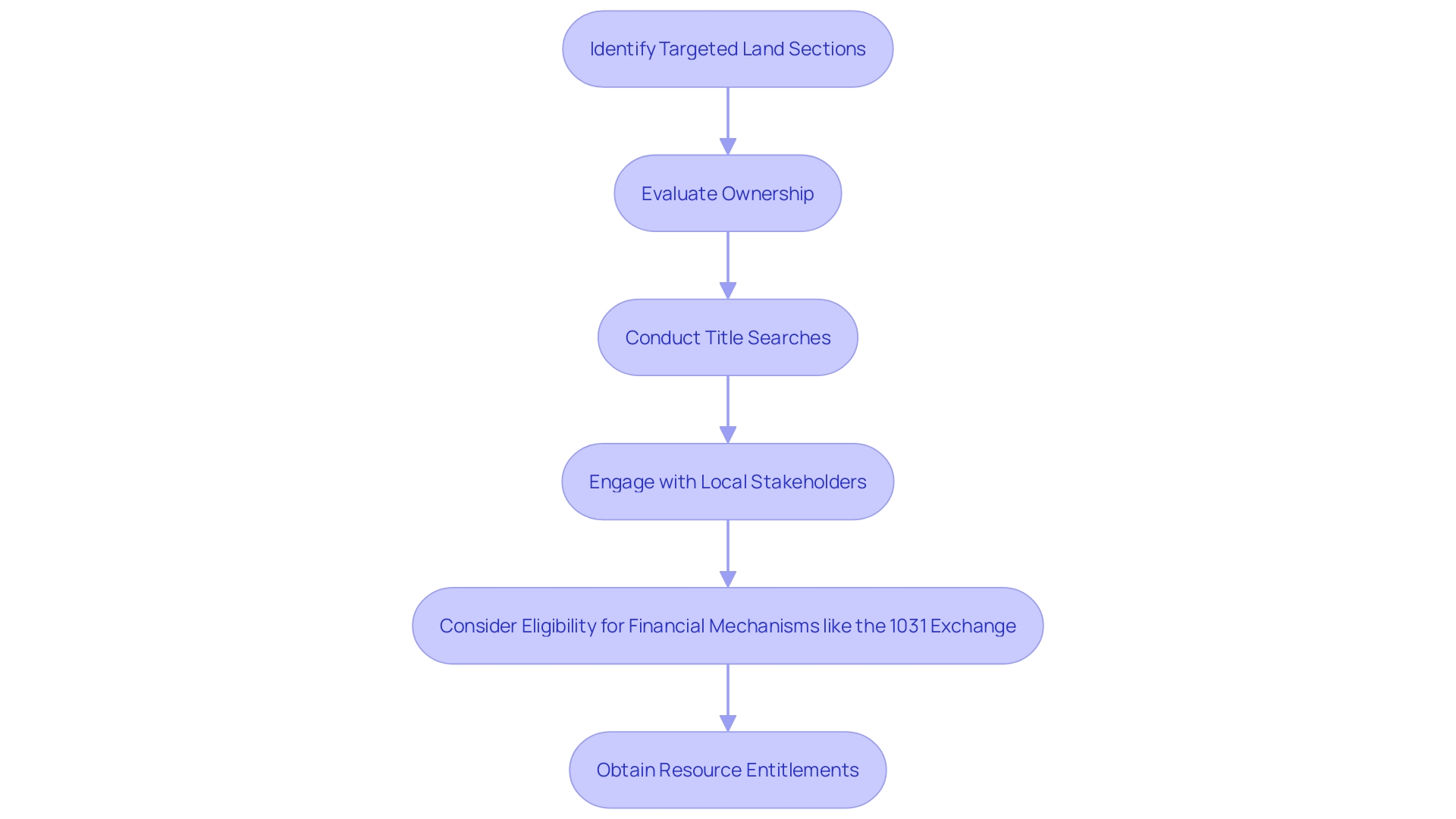
Regulatory Compliance and Considerations
Navigating the regulatory landscape in acquiring mineral ownership is a critical and intricate process. Firms must adhere to a variety of federal, state, and local regulations that oversee usage of territory, environmental safeguarding, and resource extraction. This compliance is not just a legal necessity but a strategic advantage. For instance, the Wisconsin Department of Natural Resources has proposed amendments to the state's soil cleanup regulations to align with federal standards, which will significantly impact companies responsible for soil remediation projects.
Understanding and adhering to these regulations can prevent legal pitfalls and ensure sustainable practices. As Eric C. Camp, a Board Certified specialist in Oil, Gas, and Mineral Law, emphasizes, safeguarding property interests and ensuring compliance in transactions is paramount. This sentiment is echoed by various stakeholders who highlight the importance of regulatory compliance in achieving community growth, workforce development, and environmentally friendly practices.
Moreover, the complexities of these regulations often require strategic negotiation and comprehensive understanding. A case study involving the Western Shoshone leaders illustrates how legal rulings can act as catalysts for securing property claims, emphasizing the significance of comprehensive legal understanding and strategic planning. Consequently, mastering the regulatory environment is crucial for companies to reduce risks and take advantage of opportunities in mineral ownership acquisition.
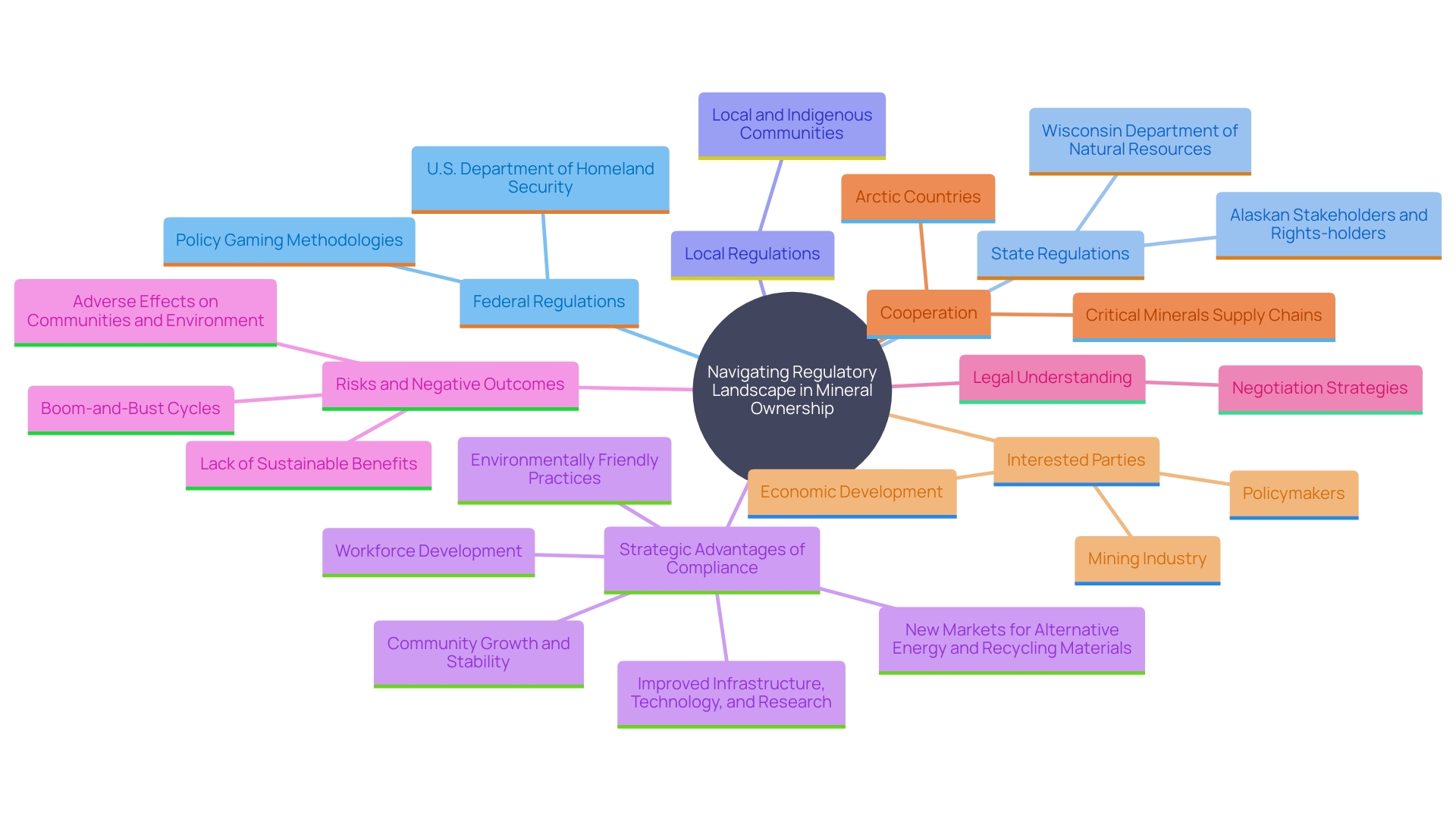
Due Diligence in Oil and Gas Acquisitions
Due diligence is a pivotal step in the land acquisition process for the oil and gas industry, involving an exhaustive evaluation of the legal, environmental, and operational facets of the property. This examination involves assessing current leases, pathways, and recognizing any possible liabilities that could affect the property's worth or usability. For example, Eric C. Camp, a Board Certified expert in Oil, Gas, and Mineral Law, emphasizes the importance of protecting property rights and ensuring the interests of various stakeholders are safeguarded during transactions. His extensive experience highlights the necessity of meticulous due diligence in mitigating risks.
Additionally, recent lawsuits, such as the one filed by the City of Chicago against major oil companies, underscore the importance of comprehensive due diligence. The lawsuit claims that these companies participated in misleading practices regarding the impact of fossil fuels, resulting in significant adaptation and mitigation expenses. This case demonstrates how neglecting ecological liabilities can lead to considerable financial and reputational harm.
Furthermore, industry statistics indicate that uncertainty about regulations pertaining to nature discourages 68% of respondents in Canadian provinces, in contrast to 41% in US states. This highlights the critical need for thorough due diligence to navigate regulatory complexities and ensure compliance. By conducting a detailed assessment, companies can make informed decisions, minimize risks, and enhance the overall success of the land acquisition projects.
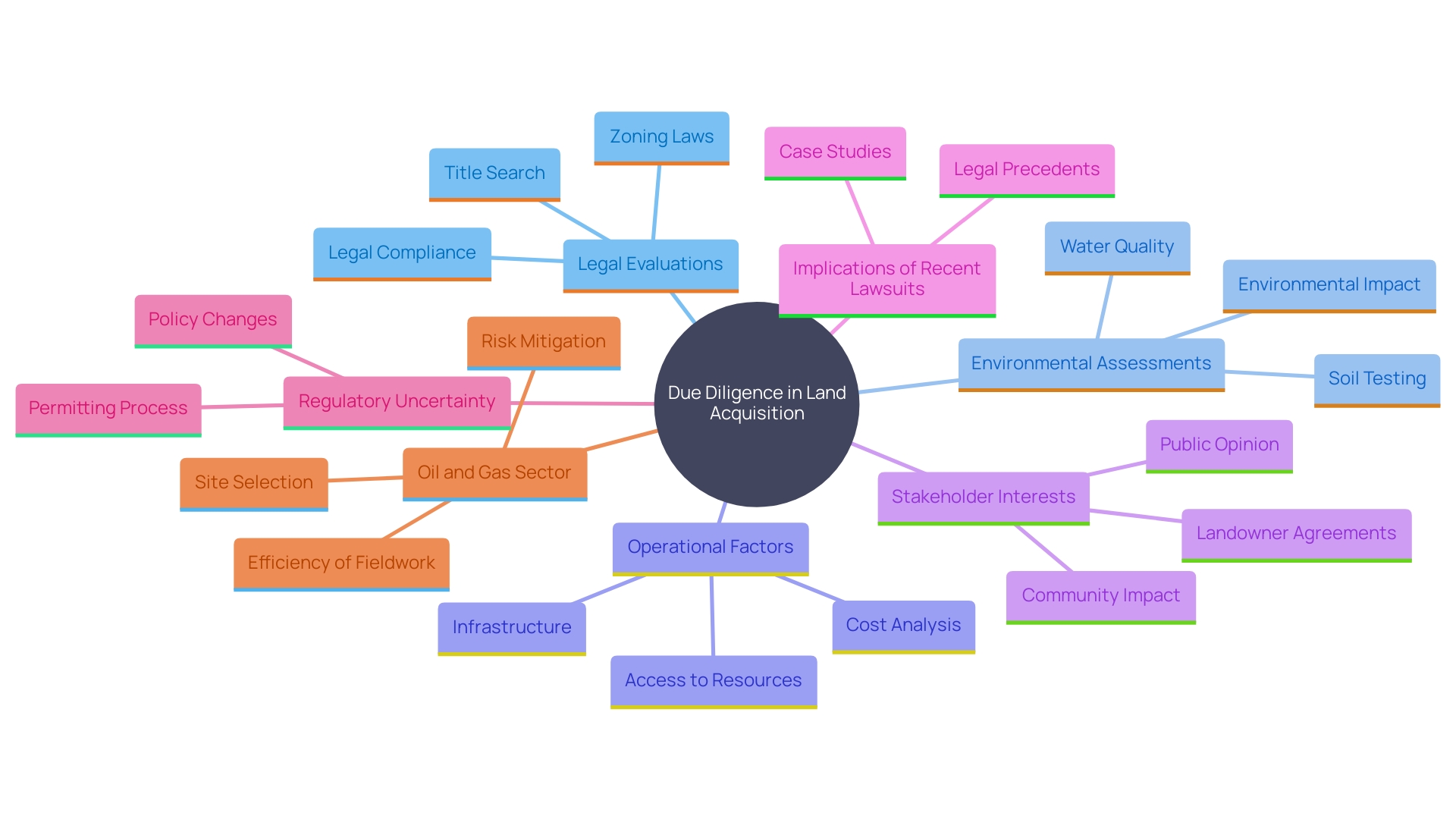
Environmental Due Diligence
Due diligence regarding the surroundings is essential in recognizing possible ecological liabilities associated with a property. This comprehensive process includes site assessments to detect hazardous materials and evaluate the potential ecological impact of extraction activities. 'Strict adherence to ecological regulations is not just a legal mandate but a cornerstone of corporate responsibility.'. Recent case studies from regions such as Albania, Lebanon, and North Macedonia highlight the severe consequences of inadequate oversight of nature, including corruption risks and harmful effects on human health. Moreover, as stated by Jennifer Granholm, US Secretary of Energy, effective management of natural resources is essential for sustainable practices. The World Bank's initiative to enhance technical support for clean energy projects in Eastern and Southern Africa underscores the global emphasis on sustainable development. Adherence to regulations and proactive environmental stewardship are essential for reducing risks and promoting a responsible approach to property acquisition and development.
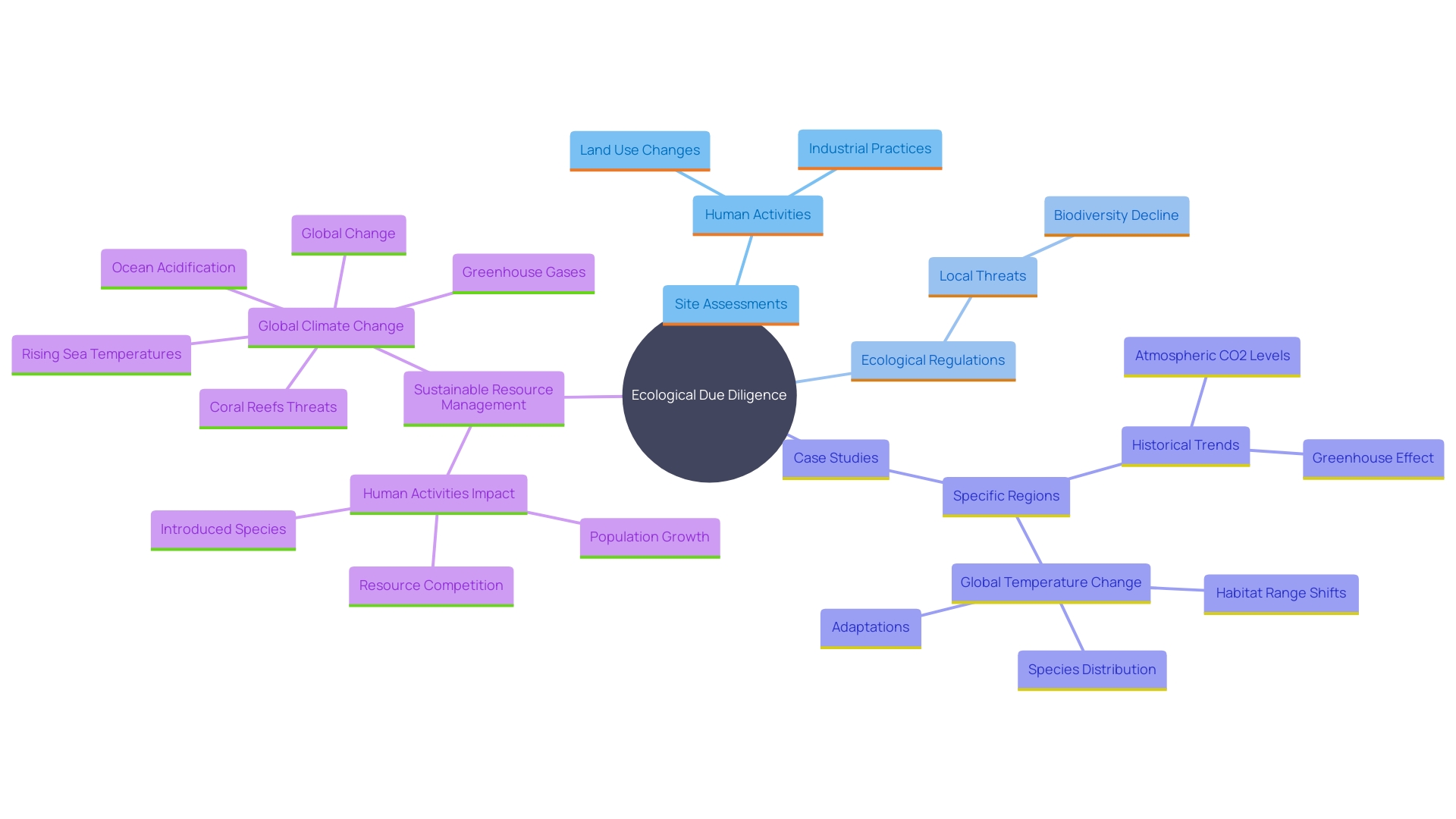
Risks and Challenges in Acquiring Mineral Rights
Obtaining resource rights involves navigating a labyrinth of complexities, including negotiating with multiple landowners, reconciling conflicting interests, and managing community relationships. These challenges are further compounded by market fluctuations and evolving regulatory frameworks, which can significantly impact the feasibility and cost of property acquisition. For instance, the General Mining Law of 1872 mandates that mining claims on federal land must contain a valuable resource deposit, a requirement that ensures land is used for its intended purpose. However, recent legislative proposals aim to refine these criteria, potentially waiving discovery requirements for normal operations while maintaining regulatory consistency.
The historical background of resource entitlements, like those in Texas, emphasizes the complex nature of these discussions. Since the 1866 state constitution, Texans have had the right to access subsurface resources, but these rights are often severed from surface ownership, necessitating detailed legal records and fractional ownership shares. This separation, while beneficial for resource management, introduces additional layers of complexity in negotiations.
Moreover, the ecological, social, and governance (ESG) issues identified in surveys by consulting firms like EY highlight the broader risks involved. Companies must balance the need for resource extraction with the imperative to minimize environmental impact and foster community development. Programs like Mineral-X at Stanford University are pioneering innovations to create resilient mineral supply chains, emphasizing technological advancements that support a transition to clean energy.
The risks and opportunities identified in the Andean highlands research reflect familiar themes: the need for community growth, workforce development, and sustainable practices versus the dangers of boom-and-bust cycles and adverse effects on local communities. Policymakers and industry stakeholders must navigate these risks strategically to ensure that property acquisition efforts are both effective and equitable.
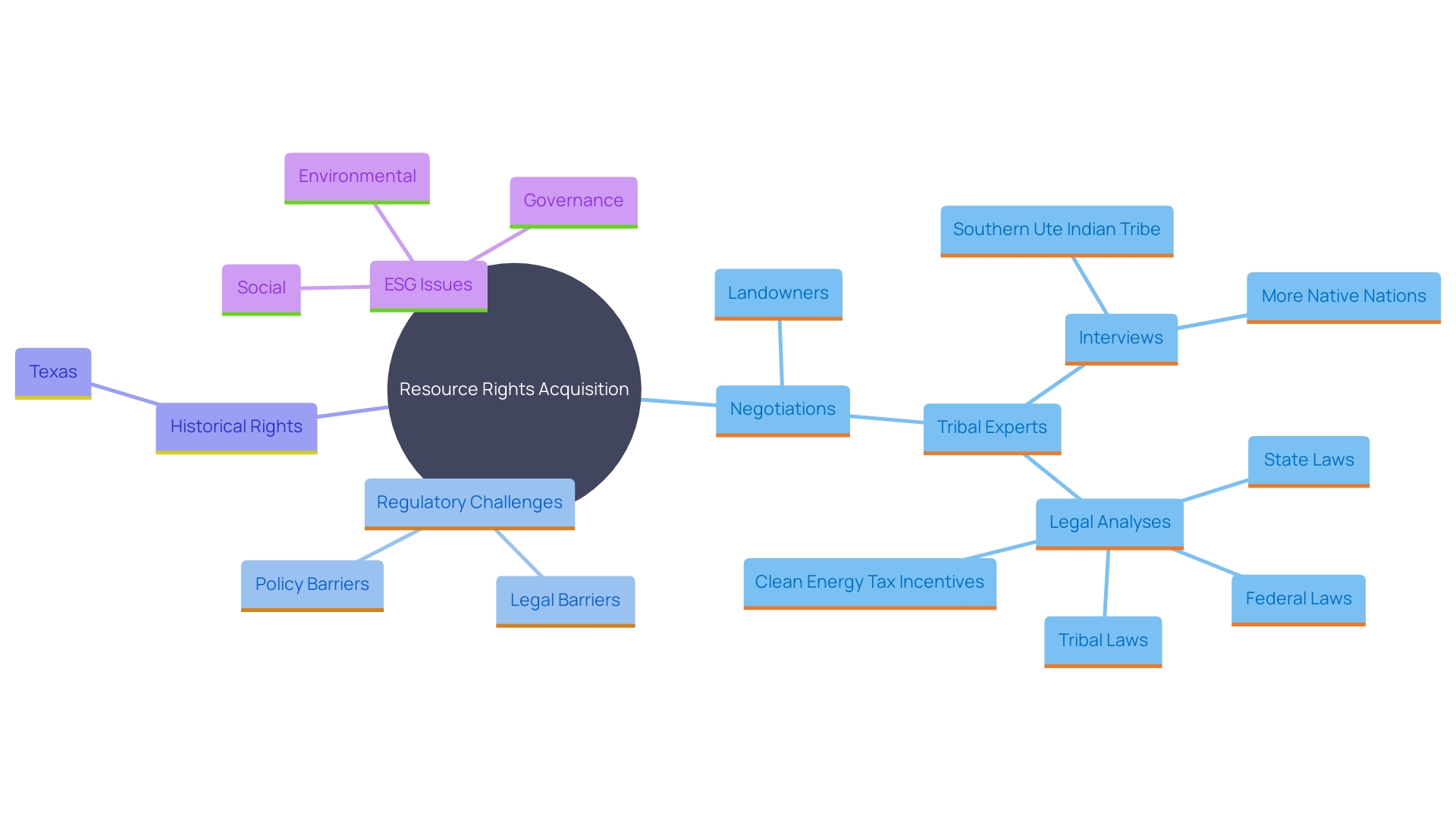
Strategic Planning and Management
Effective strategic planning is paramount for successful property acquisition in the oil and gas sector. The process begins with establishing clear objectives and identifying potential parcels. Developing a structured negotiation approach is essential, especially given the complexities highlighted by recent market activities. For instance, the global oil & gas market in Q2 2024 witnessed deals worth $86 billion, indicating the critical importance of strategic foresight in property acquisition.
Incorporating stakeholder feedback is another critical component. The Government of Newfoundland and Labrador’s phased review of its offshore oil and gas interests, involving stakeholder input and expert consultations, exemplifies a thorough approach. This exercise, which includes presenting the province's portfolio to potential buyers, ensures informed decision-making without binding commitments, thereby enhancing the negotiation process.
Leveraging modern technology for data analysis significantly improves decision-making and acquisition outcomes. Advanced tools such as 3D seismic imaging and IoT devices have revolutionized the industry, reducing risks and increasing efficiency. This shift from traditional methods to data-driven approaches underscores the importance of integrating technology in strategic planning.
The combination of clear objectives, stakeholder involvement, and advanced technology not only streamlines the acquisition process but also aligns with broader industry trends, such as the increasing focus on sustainability and clean energy initiatives. This comprehensive approach ensures that land acquisition efforts are not only effective but also contribute to the sector's long-term success.
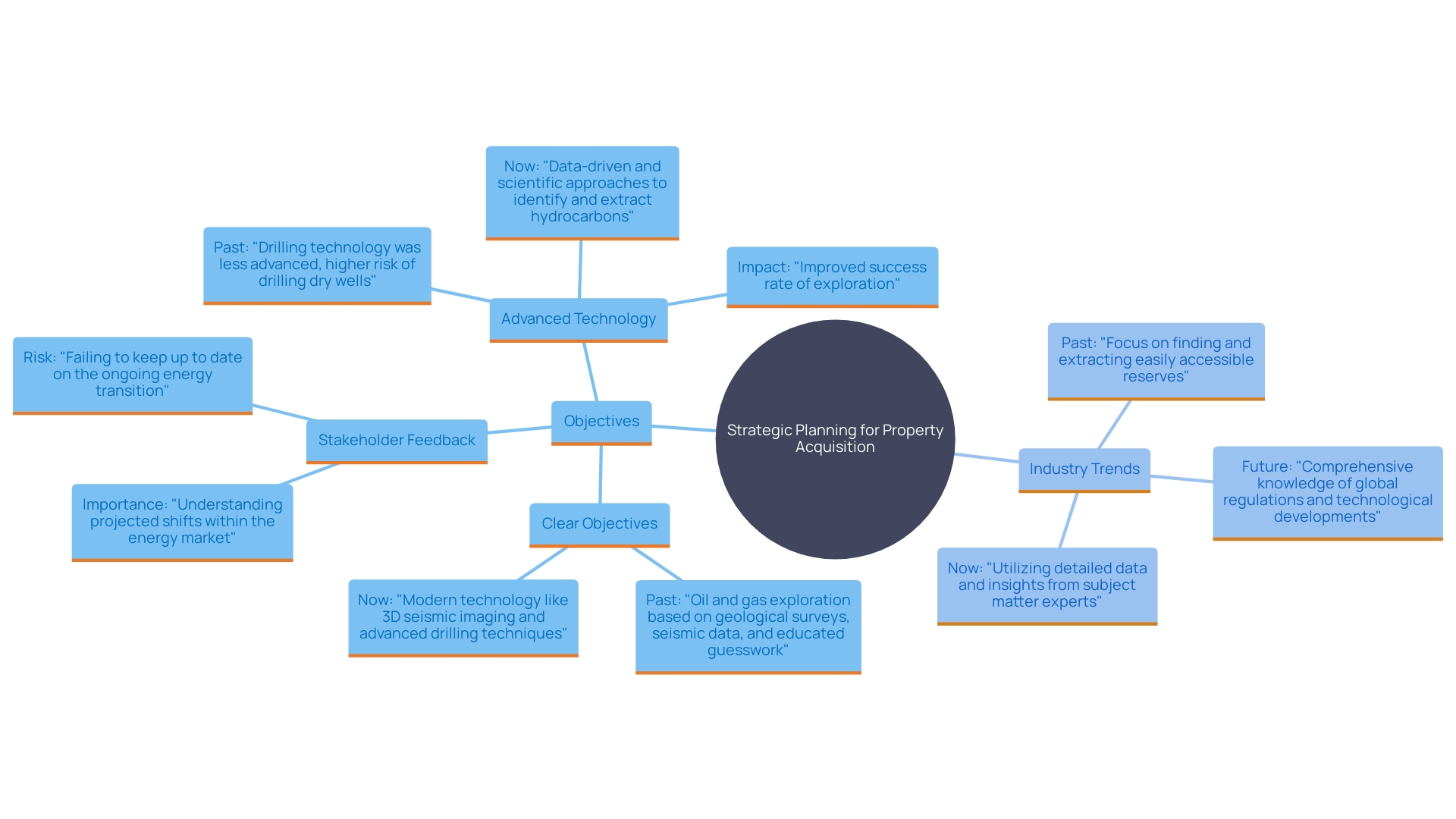
Conclusion
Understanding mineral rights is critical for stakeholders in the oil and gas industry. The distinction between surface and mineral rights, particularly in historically rich regions like Texas, highlights the economic and cultural significance of these rights. The complex legal landscape surrounding mineral ownership necessitates a thorough grasp of regulatory frameworks, as evidenced by the Bureau of Land Management's leasing program and its implications for resource management.
The process of acquiring mineral rights begins with diligent research and relationship-building. Title searches and assessments are vital to navigate the intricate ownership structures. Regulatory compliance is equally important, with adherence to federal, state, and local laws serving as both a legal obligation and a strategic advantage.
The necessity for due diligence further emphasizes the importance of evaluating potential liabilities and environmental impacts, ensuring that stakeholders are well-informed and prepared for the challenges ahead.
The risks associated with acquiring mineral rights are compounded by market fluctuations and evolving regulations. Strategic planning emerges as a crucial component in addressing these complexities, enabling companies to set clear objectives and incorporate stakeholder feedback. The integration of technology enhances decision-making and facilitates more efficient acquisition processes.
In summary, a comprehensive understanding of mineral rights acquisition—encompassing initial assessments, regulatory compliance, due diligence, and strategic planning—is essential for navigating this multifaceted landscape. As the demand for minerals continues to rise, particularly in the context of renewable energy, the importance of securing clear and enforceable mineral rights cannot be overstated. Effective management of these rights will play a pivotal role in shaping the future of resource extraction and environmental stewardship.




